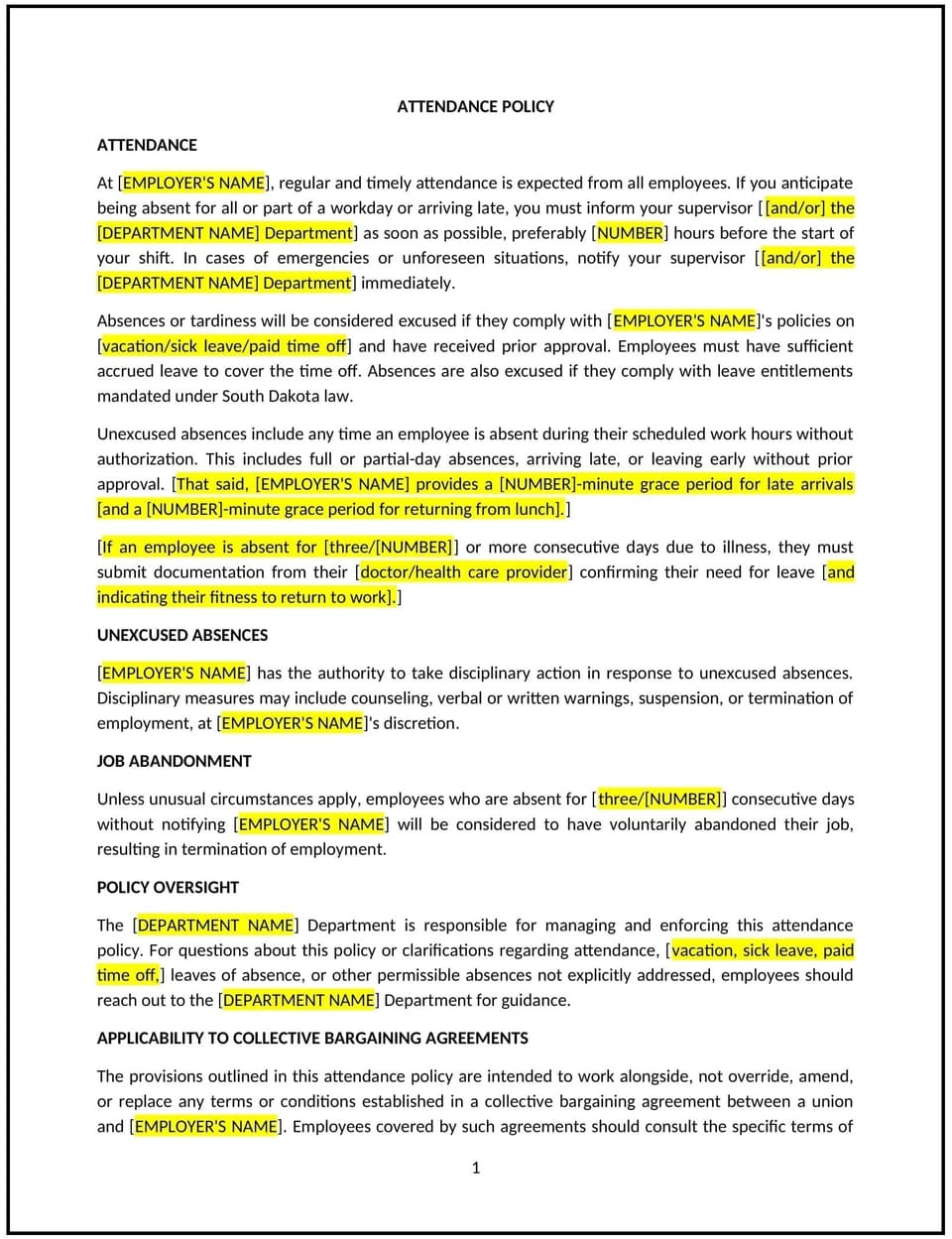Attendance policy (South Dakota): Free template

Attendance policy (South Dakota)
This attendance policy is designed to help South Dakota businesses establish clear guidelines for employee attendance and punctuality. It outlines procedures for reporting absences, managing tardiness, and addressing excessive absenteeism.
By adopting this policy, businesses can maintain productivity, ensure fair treatment of employees, and align with general best practices for attendance management.
How to use this attendance policy (South Dakota)
- Define attendance expectations: Explain the importance of punctuality and regular attendance for maintaining productivity.
- Establish reporting procedures: Provide steps for employees to report absences, including required notice and documentation.
- Address tardiness: Outline consequences for frequent tardiness and steps for improvement.
- Manage absenteeism: Specify how excessive absenteeism will be addressed, including corrective actions.
- Train managers: Educate supervisors on enforcing the policy consistently and fairly.
- Review and update: Assess the policy annually to ensure it aligns with evolving business needs and employee expectations.
Benefits of using this attendance policy (South Dakota)
This policy offers several advantages for South Dakota businesses:
- Maintains productivity: Ensures consistent attendance to support workflow and business operations.
- Promotes fairness: Provides clear guidelines for managing attendance, reducing favoritism or inconsistent enforcement.
- Reduces disruptions: Minimizes the impact of absenteeism and tardiness on team performance.
- Builds accountability: Encourages employees to take responsibility for their attendance and punctuality.
- Supports reputation: Positions the business as a professional and organized employer in the community.
Tips for using this attendance policy (South Dakota)
- Communicate the policy: Share the policy with employees and include it in the employee handbook.
- Provide training: Educate managers on enforcing the policy consistently and fairly.
- Monitor attendance: Regularly review attendance records to identify patterns and address issues.
- Address issues promptly: Take corrective action if attendance problems persist.
- Update regularly: Assess the policy annually to ensure it aligns with evolving business needs and employee expectations.
Q: How does this policy benefit businesses?
A: By managing attendance, businesses can maintain productivity, promote fairness, and reduce disruptions.
Q: What should employees do if they need to miss work?
A: Employees should follow the reporting procedures outlined in the policy, including providing notice and documentation.
Q: How should businesses handle excessive absenteeism?
A: Businesses should address excessive absenteeism through corrective actions, such as counseling or disciplinary measures.
Q: Can businesses offer flexible attendance options?
A: Yes, businesses can offer flexible options, such as remote work or adjusted schedules, if it aligns with business needs.
Q: How often should businesses review this policy?
A: Businesses should review the policy annually or as needed to ensure it aligns with evolving business needs and employee expectations.
This article contains general legal information and does not contain legal advice. Cobrief is not a law firm or a substitute for an attorney or law firm. The law is complex and changes often. For legal advice, please ask a lawyer.


